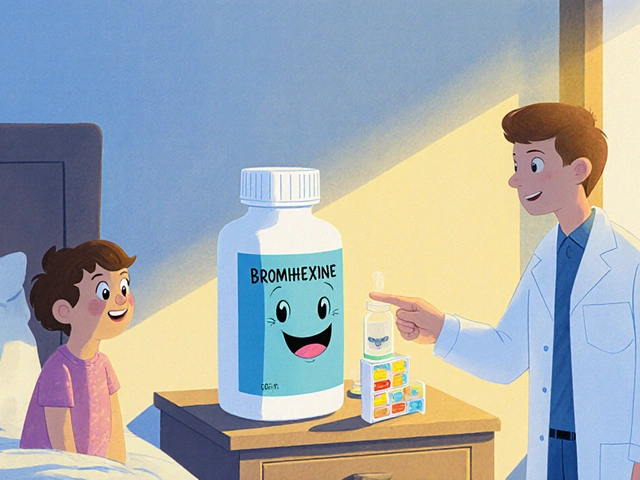When brain tissue swells, pressure rises fast and steals blood flow from vital areas. You don’t have time for guesswork. Furosemide isn’t the star of the show in cerebral edema-that role belongs to hyperosmolar therapy and the underlying cause-but it can be a smart supporting act. Used well, it can shave volume, stretch the effect of mannitol, and help you keep a safer fluid balance. Used wrong, it can tank blood pressure, fry kidneys, and barely touch intracranial pressure (ICP).
This guide keeps it real: what furosemide can do, when to reach for it, how to dose it, what to watch, and where it loses to mannitol or hypertonic saline. Short version: it’s an adjunct, not a substitute.
TL;DR: Where Furosemide Fits in Cerebral Edema
- Role: Adjunct to osmotherapy. It reduces intravascular volume and may modestly lower CSF production via Na-K-2Cl blockade in the choroid plexus. Expect small, indirect ICP help, not a rapid primary drop.
- When to consider: After initial hyperosmolar therapy (mannitol or hypertonic saline) when volume overload is a problem, to prolong mannitol’s effect, or when you need gentle negative fluid balance without worsening ICP.
- When not to: Hypotension, shock, evolving acute kidney injury, severe hyponatremia/hypokalemia, or when you need immediate robust ICP lowering-use mannitol or hypertonic saline first.
- Dose (adults): 20-40 mg IV; repeat or increase to 80 mg based on urine response and hemodynamics. Pediatrics: 0.5-1 mg/kg IV (max 6 mg/kg/day), titrate carefully.
- Evidence snapshot: Modern guidelines place furosemide as an adjunct; not first-line for ICP. See Neurocritical Care Society (2020 cerebral edema guideline), Brain Trauma Foundation, and AHA/ASA stroke guidance.
If you clicked this to decide whether to give it now: if the patient has high ICP and you haven’t given hypertonic saline or mannitol yet, give those first. If you already have and the patient is fluid-overloaded or you want to extend mannitol’s effect, a cautious furosemide dose makes sense.
Step-by-Step: Using Furosemide Safely and Effectively
Here’s a simple path you can follow in a high-stakes setting.
Define the problem quickly: Is this vasogenic edema (tumor, abscess), cytotoxic edema (ischemia), hydrocephalus, or high-altitude cerebral edema? Your primary therapy changes with the cause.
- Vasogenic (tumor, metastases, abscess): Steroids (dexamethasone) help; osmotherapy for ICP spikes.
- Cytotoxic (ischemic stroke): Osmotherapy for mass effect; avoid hypotension and hypovolemia.
- ICH/SAH: Osmotherapy; avoid hypovolemia that could worsen perfusion or vasospasm risk.
- Hydrocephalus: Drain CSF; drugs won’t fix blocked flow. Furosemide has a small role at best.
Start proven ICP-lowering first: Head up 30°, analgesia/sedation, controlled ventilation (avoid hypocapnia unless herniation), and hyperosmolar therapy:
- Mannitol 0.25-1 g/kg IV bolus (watch serum osmolality and kidneys).
- Hypertonic saline (e.g., 3% bolus 2-5 mL/kg or infusion; 23.4% small-volume bolus for severe spikes). Target a safe sodium range (often 145-155 mEq/L depending on protocol).
Decide if furosemide helps in this moment:
- Good scenarios: You used mannitol and want to prolong or enhance diuresis; the patient is volume overloaded after multiple osmotic doses; pulmonary edema coexists; you’re aiming for a slightly negative fluid balance without swinging sodium.
- Bad scenarios: Borderline MAP, rising creatinine, active vasospasm risk after SAH, sodium low or falling, or you need a fast, large ICP drop right now.
Pick a dose and route:
- Adults: 20-40 mg IV over 2-5 minutes. Reassess in 20-30 minutes. If urine output is sluggish and hemodynamics stable, consider 40-80 mg IV. Avoid rapid push with other ototoxins (e.g., aminoglycosides).
- Pediatrics: 0.5-1 mg/kg IV; do not exceed 6 mg/kg/day. Reassess closely; kids dehydrate fast.
- Continuous infusion is rarely needed for ICP goals; if used for diuretic resistance, consider 0.05-0.4 mg/kg/h with tight electrolyte and hemodynamic monitoring.
Combine smartly:
- Mannitol + furosemide: Classic pairing. Give mannitol first; add furosemide to promote diuresis and limit rebound. Space administration by a few minutes; monitor osmolality and blood pressure.
- Hypertonic saline + furosemide: Use with caution. You may blunt the intravascular expansion effect of saline. Consider only when volume overload is clear or oxygenation demands it.
Monitor and adjust:
- Hemodynamics: Keep CPP in range (CPP = MAP − ICP). Don’t chase urine at the cost of cerebral perfusion.
- Labs: Sodium, potassium, chloride, bicarbonate, creatinine, BUN, magnesium. Recheck 2-4 hours after dosing and at least twice daily if repeated.
- Fluid balance: Aim for even to slightly negative balance unless contraindicated. Watch for contraction alkalosis.
- Ototoxicity: Rare with single doses; risk rises with high doses, rapid IV, and aminoglycosides.
Know when to stop:
- No net clinical benefit on ICP trends, hypotension, worsening AKI, or falling sodium/potassium that’s hard to correct.
- If definitive therapy is ready (OR for mass, EVD for hydrocephalus), don’t let diuresis delay it.
Key clinical pearl: Furosemide’s effect on ICP is mostly indirect-through diuresis and a small reduction in CSF production. Hyperosmolar agents change gradients; furosemide moves water out of the body. Keep that mental model in mind when you pick your tool.

Scenarios and Examples: Where It Shines, Where It Doesn’t
Case 1: Severe TBI with ICP spikes. You’ve already given hypertonic saline boluses. The patient is now +3 liters with crackles on exam. This is a fair moment to use furosemide 20-40 mg IV to pull off volume while you maintain CPP. You don’t expect a dramatic ICP drop from furosemide itself, but you might soften the next spike and help oxygenation.
Case 2: Large hemispheric stroke, mild midline shift, blood pressure borderline. You want every trick to avoid herniation, but hypotension would be worse. This is not furosemide’s moment. Go with hypertonic saline (careful bolus or infusion), tight sedation, and call neurosurgery early for decompression if needed.
Case 3: Tumor-related vasogenic edema with headaches and nausea. Dexamethasone eases edema. If ICP surges during a vomiting episode, mannitol or hypertonic saline helps quickly. Furosemide may be added later for fluid balance if mannitol has stacked up, but it’s not the frontline.
Case 4: Intraventricular hemorrhage with acute hydrocephalus. The fix is CSF diversion (EVD). Furosemide won’t solve obstructed flow and could stall you if you chase urine instead of calling neurosurgery.
Case 5: High-altitude cerebral edema (HACE). The treatment is descent, oxygen, and dexamethasone. Diuretics risk volume depletion and worse perfusion. Don’t use furosemide here.
Case 6: Idiopathic intracranial hypertension (not classic edema, but raised ICP). Acetazolamide is first-line to reduce CSF production. Furosemide is sometimes used as add-on if acetazolamide alone isn’t enough or not tolerated. Different playbook from acute malignant edema.
These vignettes echo current guidance: primary ICP therapy first; furosemide as a context-dependent helper. The Neurocritical Care Society’s 2020 cerebral edema guideline and Brain Trauma Foundation guidance both stress hyperosmolar therapy for rapid ICP control. AHA/ASA stroke guidelines emphasize maintaining perfusion and using osmotherapy, not routine diuresis, to manage mass effect. Evidence for combining mannitol with furosemide is older and limited, but the practice survives as an adjunct when volume control matters.
Checklists, Quick References, and a Comparison Table
Bookmark this section.
Quick dosing (adults):
- Furosemide IV: 20-40 mg; may repeat or increase to 80 mg based on response.
- Mannitol IV: 0.25-1 g/kg bolus; re-dose guided by ICP, serum osmolality, and hemodynamics.
- Hypertonic saline: 3% 2-5 mL/kg bolus or infusion per protocol; 23.4% 30 mL via central line for refractory spikes.
Quick dosing (pediatrics):
- Furosemide: 0.5-1 mg/kg IV (max daily 6 mg/kg), reassess after each dose.
- Mannitol: 0.25-1 g/kg IV.
- Hypertonic saline: 3% 2-3 mL/kg bolus (institution-specific); titrate carefully.
Monitoring checklist after furosemide:
- MAP/CPP: Keep CPP target individualized (often 60-70 mmHg in adults with TBI; follow your local protocol).
- Urine output: Aim for 0.5-1 mL/kg/h unless otherwise guided.
- Electrolytes: Na, K, Cl, Mg, HCO3-recheck 2-4 hours after dosing. Replace promptly.
- Renal: Creatinine, BUN. Track trend, not just single values.
- Lungs: Signs of pulmonary edema improvement if that was your goal.
- Ototoxic risk: Avoid rapid high-dose IV in combo with aminoglycosides or high-dose salicylates.
Pitfalls to avoid:
- Chasing urine at the cost of CPP: If MAP falls, you can worsen brain ischemia even as ICP dips slightly.
- Stacking diuretics on hypertonic saline: May undo the preload and sodium strategy you just built.
- Ignoring sodium: Furosemide can worsen hyponatremia; watch especially in SAH patients prone to natriuresis.
- Assuming it’s an ICP drug: It’s a fluid and CSF production modulator, not a primary osmotic agent.
Handy heuristics:
- If you reach for mannitol twice and the chest X-ray is wetter, add a small furosemide dose before the next mannitol to keep lungs happy and maintain oxygenation.
- Pick hypertonic saline over mannitol when hypotension or AKI risk is high; add furosemide later only if volume overload becomes your new problem.
- In ICH/SAH, favor euvolemia. If you must diurese, go gently and keep a close eye on sodium and MAP.
| Therapy | Typical Adult Dosing | Mechanism | Onset/Peak | Key Monitoring | Notable Risks | Best Use Notes |
|---|---|---|---|---|---|---|
| Mannitol | 0.25-1 g/kg IV bolus | Osmotic gradient pulls water from brain; renal excretion | Onset 5-10 min; peak 20-60 min | Serum osmolality, osmolar gap, BP, urine output, creatinine | AKI, hypotension, rebound ICP if serum osmolality high | Fast ICP drops; avoid in hypotension/AKI risk |
| Hypertonic Saline | 3% 2-5 mL/kg bolus or infusion; 23.4% 30 mL bolus | Raises serum Na/osmolality to move water out of brain | Minutes; rapid with 23.4% | Serum Na (target per protocol), chloride, osmolality, BP, volume status | Hypernatremia, hyperchloremic acidosis, central line issues (for 23.4%) | Good when hypotensive or AKI risk; titratable |
| Furosemide | 20-40 mg IV; repeat/titrate | Loop diuretic; blocks NKCC2; reduces intravascular volume; may reduce CSF production | Diuresis 5-20 min; peak 20-60 min | MAP/CPP, electrolytes (Na/K/Mg), creatinine, urine output | Hypotension, AKI, electrolyte losses, ototoxicity (rare) | Adjunct to osmotherapy; helpful for volume control |
Evidence and guideline anchors (no links, by name):
- Neurocritical Care Society, 2020: Guideline on acute treatment of cerebral edema-supports hyperosmolar therapy as primary treatment; loop diuretics as adjuncts.
- Brain Trauma Foundation Guideline for Severe TBI: Emphasizes hyperosmolar therapy and CPP targets; diuretics not first-line ICP therapy.
- AHA/ASA Guidelines (2018-2023 updates) for acute ischemic stroke and ICH: Use osmotherapy for herniation/mass effect; maintain perfusion; avoid hypovolemia.
- Wilderness Medical Society guideline for HACE (latest update): Descent and dexamethasone; diuretics are not recommended.

FAQ and Next Steps: Practical Troubleshooting
Common questions, quick answers:
- Does furosemide lower ICP on its own? Only modestly and indirectly. Don’t expect a big, fast drop like with hypertonic saline or mannitol.
- How fast will I see an effect? Diuresis starts within minutes; if your aim is volume offloading or extending mannitol’s effect, reassess within 20-30 minutes.
- What about sulfa allergy? True severe sulfa antibiotic allergy rarely cross-reacts with non-antibiotic sulfonamides like furosemide, but caution is reasonable in severe past reactions.
- Ototoxicity risk? Low with single moderate doses. Risk rises with very rapid pushes, high doses, renal failure, and concurrent aminoglycosides.
- AKI concerns? Yes. Avoid or go gently if creatinine is rising, urine output is poor, or the patient is intravascularly dry. Prefer hypertonic saline in these cases.
- Pregnancy? Use only if benefits outweigh risks; focus on cause-based therapy and osmotherapy first with obstetric input.
- Can I use it with continuous renal replacement therapy (CRRT)? Yes, but the diuretic effect may be blunted. Hyperosmolar strategies and ICP monitoring remain key.
- Continuous infusion better than bolus? Not for ICP goals specifically. If used for diuretic resistance, infusions need tight electrolyte and hemodynamic monitoring.
Next steps by role:
- Emergency clinician: If herniation is suspected, give hypertonic saline or mannitol first. Consider furosemide only after initial stabilization and if volume overload is hurting oxygenation.
- ICU nurse: Before furosemide, check last sodium, potassium, creatinine, and MAP. After dosing, trend urine output, watch CPP, and recheck labs within a few hours.
- Neurology/Neurosurgery resident: Tie every furosemide order to an objective: prevent fluid overload, extend mannitol’s effect, or improve oxygenation. Set a stop rule (MAP, Na, Cr, ICP response).
- Pharmacist: Flag high ototoxic risk combos, advise on rate of administration, and help build electrolyte replacement protocols.
Simple decision aid (mental flow):
- Need immediate robust ICP drop? Choose hypertonic saline or mannitol.
- Post-osmotherapy with fluid overload or pulmonary edema? Add furosemide 20-40 mg IV if MAP/CPP are safe.
- Borderline MAP/AKI risk/high vasospasm risk? Defer furosemide; optimize osmotherapy and perfusion.
- Reassess in 20-30 minutes; if no clear benefit or new harm, stop.
Final thought: use furosemide to support your osmotherapy strategy, not to replace it. Keep the brain perfused, the lungs dry enough to oxygenate, and the labs stable. That balance-not a big diuresis number-is what helps your patient.
SEO note: if you searched for furosemide cerebral edema, this is the short version-adjunct, not primary, dose 20-40 mg IV, watch perfusion and electrolytes, and lean on hypertonic saline or mannitol for real ICP drops.






8 Comments
I’ve used furosemide in the neuro ICU for years, mostly as a quiet sidekick to mannitol. It’s not glamorous, but when a patient’s been getting 300 mL/hour of urine and their lungs are filling up like a bathtub, it’s the only thing that doesn’t make the MAP dive off a cliff. I’ve seen it extend the window between mannitol doses by 90 minutes-sometimes more. The key? Don’t chase urine. Chase CPP. If their MAP drops below 70, stop. No amount of diuresis is worth a hypoperfused brain.
Also, the CSF production angle? Real. Not huge, but measurable on lumbar drains. I’ve had patients with idiopathic intracranial hypertension where acetazolamide failed and furosemide gave us just enough wiggle room to get them to neurosurgery. It’s not the hero, but it’s the guy who holds the door open while the real team rushes in.
While the clinical pragmatism of this guide is commendable, I must emphasize that the evidence base for furosemide as an adjunct in cerebral edema remains largely anecdotal and derived from outdated protocols. Modern neurocritical care guidelines, including those from the Neurocritical Care Society, explicitly state that loop diuretics lack robust randomized trial support for ICP reduction. The proposed synergy with mannitol is mechanistically plausible but clinically unvalidated in contemporary cohorts. Furthermore, the risk-benefit calculus shifts unfavorably in the context of acute kidney injury, which is increasingly common in critically ill neuro patients. Until high-quality prospective data emerges, furosemide should remain an experimental adjunct at best, not a routine consideration.
wait so if someone has a tumor and they’re fluid overloaded… you give furosemide after mannitol? i think i read that right but my brain is kinda fuzzy rn. also, is the 20-40mg dose for like… a 150lb person? or does it scale? i’m asking because i’m a nurse and i don’t wanna mess this up 😅
also, typo: ‘sulfa allergy’ thing said ‘non-antibiotic sulfonamides’-i think that’s right? but i always mix up sulfa drugs vs sulfa diuretics. sorry if i’m being dumb.
OMG I love this so much. Like, finally someone who gets it. 😭 I’ve been screaming into the void for years that furosemide isn’t some magic ICP bullet-it’s a *fluid balance tool*. And yes, you’re right, if you’re giving mannitol and the patient looks like a water balloon with crackles, you’re basically begging for ARDS. I had a patient last month who was +8L after 3 days of TBI, and we gave 40mg furosemide and her SpO2 jumped from 88 to 97 in 20 minutes. No ICP drop? Nope. But she stopped gasping for air. That’s a win.
Also, can we PLEASE stop treating every edema like it’s a TBI? HACE? NO. Hydrocephalus? NO. I swear half the residents think furosemide is the answer to everything. 🙄
Also also-thank you for mentioning ototoxicity. I had a guy on gentamicin + furosemide and he went deaf in one ear. Never again.
Thank you for this meticulous, thoughtful breakdown. I’ve been practicing in rural neuro ICU for over a decade, and this is the clearest synthesis of evidence and practicality I’ve seen in years. The distinction between vasogenic and cytotoxic edema is often glossed over, yet it fundamentally alters therapeutic priorities. Furosemide’s role as a modulator of intravascular volume and CSF production-not as a direct ICP-lowering agent-is precisely the conceptual framework that needs wider adoption.
I particularly appreciate the emphasis on CPP preservation over diuresis. Too often, we confuse volume status with perfusion status. A patient may be ‘fluid overloaded’ by weight, yet still hypovolemic at the cerebral capillary level. The checklist you provided is now pinned to my workstation. And yes, the 23.4% saline + furosemide caution? Vital. I’ve seen that combo backfire spectacularly when sodium was already trending high.
One small addition: in pediatric populations, the 6 mg/kg/day ceiling is wise, but I’ve found that even 1 mg/kg can induce profound diuresis in neonates with periventricular leukomalacia. Titration is non-negotiable. Thank you again for the clarity.
Hey, so I’m a med student and I read this whole thing and I’m confused. If furosemide doesn’t really drop ICP, why even use it? Why not just give more mannitol or hypertonic saline? I mean, if the goal is to save the brain, why mess around with a drug that just makes you pee and lose potassium? Is this just old-school tradition? Like, is this something we do because ‘that’s how we’ve always done it’? I feel like I’m missing something big here.
THIS. IS. GOLD. 🌟🌟🌟🌟🌟
Just saved this to my ‘Neuro Magic’ folder 😍
Also, furosemide + mannitol = 💞
Also also, don’t give it to HACE patients!! I saw a guy in Nepal get it and he almost died because they thought ‘diuretic = brain help’ 🤦♀️
Also also also, I’m gonna use this as my go-to for my neuro rotation next month. You’re a legend. 💪🧠
PS: I printed it. On actual paper. Like a real doctor. 😎
Look, I don’t care what some fancy journal says. In the real world-where people don’t have perfect labs and nurses aren’t hovering over every mL-we use what works. I’ve seen furosemide turn a dying TBI patient into a stable one. Not because it dropped ICP, but because it kept the lungs from drowning. You want to argue about guidelines? Fine. But I’ve got 12 patients alive because we didn’t wait for perfect data-we used the tools we had.
And if you’re too scared to use 40mg IV because you’re worried about potassium? Then maybe you shouldn’t be in the ICU. We don’t have time for hand-holding. Give the drug. Watch the BP. Replace the K. Move on.
This isn’t a textbook. It’s a battlefield. And furosemide? It’s a damn good sidearm.